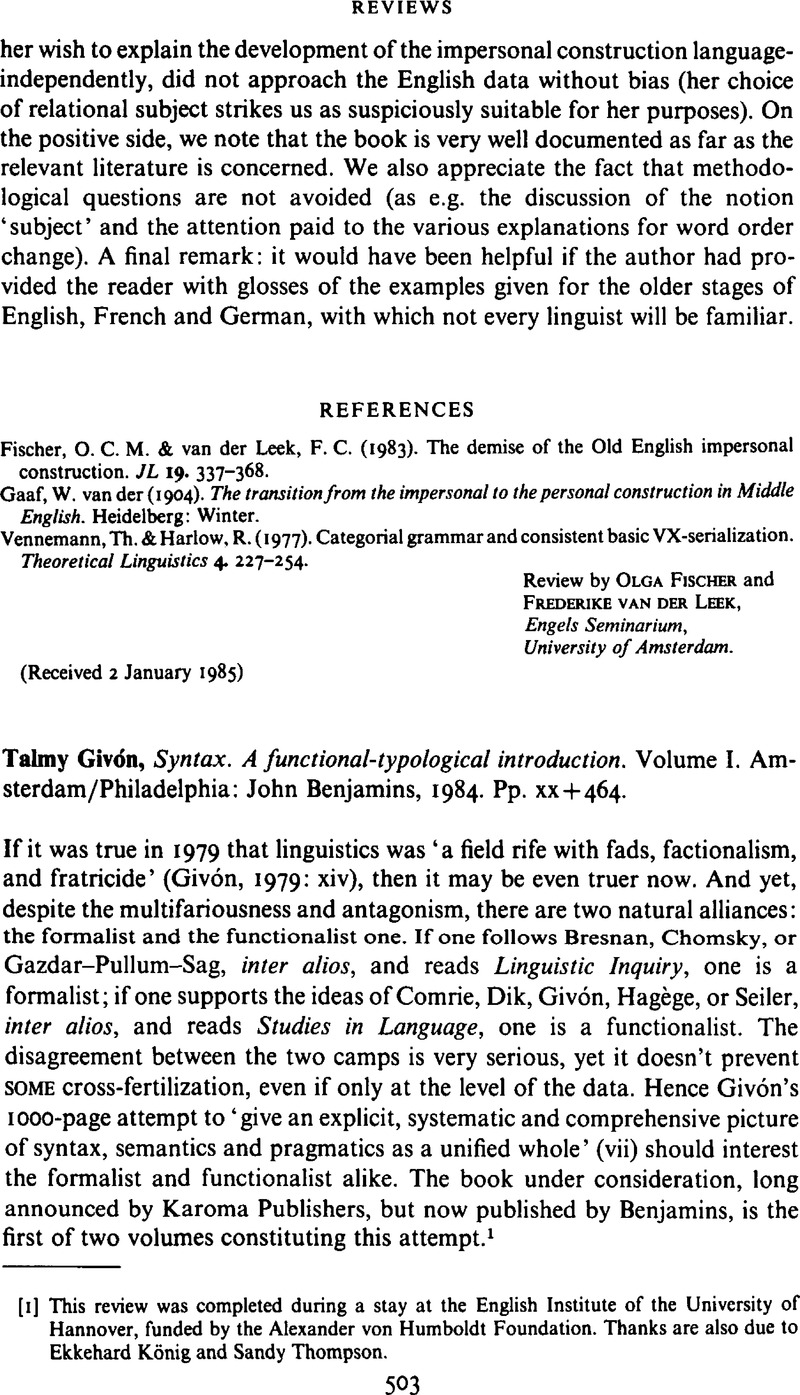Crossref Citations
This article has been cited by the following publications. This list is generated based on data provided by Crossref.
Nuyts, Jan
1995.
Handbook of Pragmatics.
p.
80.
Arka, I Wayan
2005.
Speech levels, social predicates and pragmatic structure in Balinese.
Pragmatics. Quarterly Publication of the International Pragmatics Association (IPrA),
Vol. 15,
Issue. 2-3,
p.
169.
Fernández Garay, Ana
2012.
Entre el sustantivo y el verbo.
LIAMES: Línguas Indígenas Americanas,
Vol. 6,
Issue. 1,
p.
61.
Harrison, Simon
2014.
The organisation of kinesic ensembles associated with negation.
Gesture,
Vol. 14,
Issue. 2,
p.
117.
Suihkonen, Pirkko
and
Whaley, Lindsay J.
2014.
On Diversity and Complexity of Languages Spoken in Europe and North and Central Asia.
Vol. 164,
Issue. ,
p.
xi.
2014.
The Language of Emotions.
Vol. 4,
Issue. ,
Maldonado, Ricardo
and
Guzmán, Rocío
2014.
Apenas.
Review of Cognitive Linguistics,
Vol. 12,
Issue. 2,
p.
443.
Li, Wendan
2014.
The pragmatics of existential-presentative constructions in Chinese.
International Journal of Chinese Linguistics,
Vol. 1,
Issue. 2,
p.
244.
Green, Clarence
2014.
On the relationship between clause combination, grammatical hierarchy and discourse-pragmatic coherence.
Functions of Language,
Vol. 21,
Issue. 3,
p.
297.
Rojas Nieto, Cecilia
2014.
Verb sequences and early verb inflection in Spanish.
Language, Interaction and Acquisition,
Vol. 5,
Issue. 1,
p.
82.
Zhang, Keding
2014.
A Cognitive Grammar approach to the SLocPAdjC in Mandarin Chinese.
Cognitive Linguistic Studies,
Vol. 1,
Issue. 2,
p.
218.
García Velasco, Daniel
2014.
Activation and the relation between context and grammar.
Pragmatics,
Vol. 24,
Issue. 2,
p.
297.
2015.
Argument Structure in Usage-Based Construction Grammar.
Vol. 17,
Issue. ,
Gudmestad, Aarnes
2015.
The case of the conditional and the imperfect in variable mood-choice contexts in second-language and native-speaker Spanish.
Revista Española de Lingüística Aplicada/Spanish Journal of Applied Linguistics,
Vol. 28,
Issue. 1,
p.
118.
García Velasco, Daniel
2015.
Activation and the relation between context and grammar.
Pragmatics. Quarterly Publication of the International Pragmatics Association (IPrA),
p.
297.
Baicchi, Annalisa
2015.
Conceptual metaphor in the complex dynamics of illocutionary meaning.
Review of Cognitive Linguistics,
Vol. 13,
Issue. 1,
p.
106.
Cornillie, Bert
and
De Cock, Barbara
2015.
Ways of encoding attention to the interlocutor in contemporary spoken Spanish.
Spanish in Context,
Vol. 12,
Issue. 1,
p.
1.
Foreman, John
and
Dooley, Sheila Ann
2015.
Valence Changes in Zapotec.
Vol. 110,
Issue. ,
p.
237.
Tantucci, Vittorio
2015.
Traversativity and grammaticalization.
Chinese Language and Discourse. An International and Interdisciplinary Journal,
Vol. 6,
Issue. 1,
p.
57.
Holvoet, Axel
2015.
Voice and Argument Structure in Baltic.
Vol. 2,
Issue. ,
p.
367.





